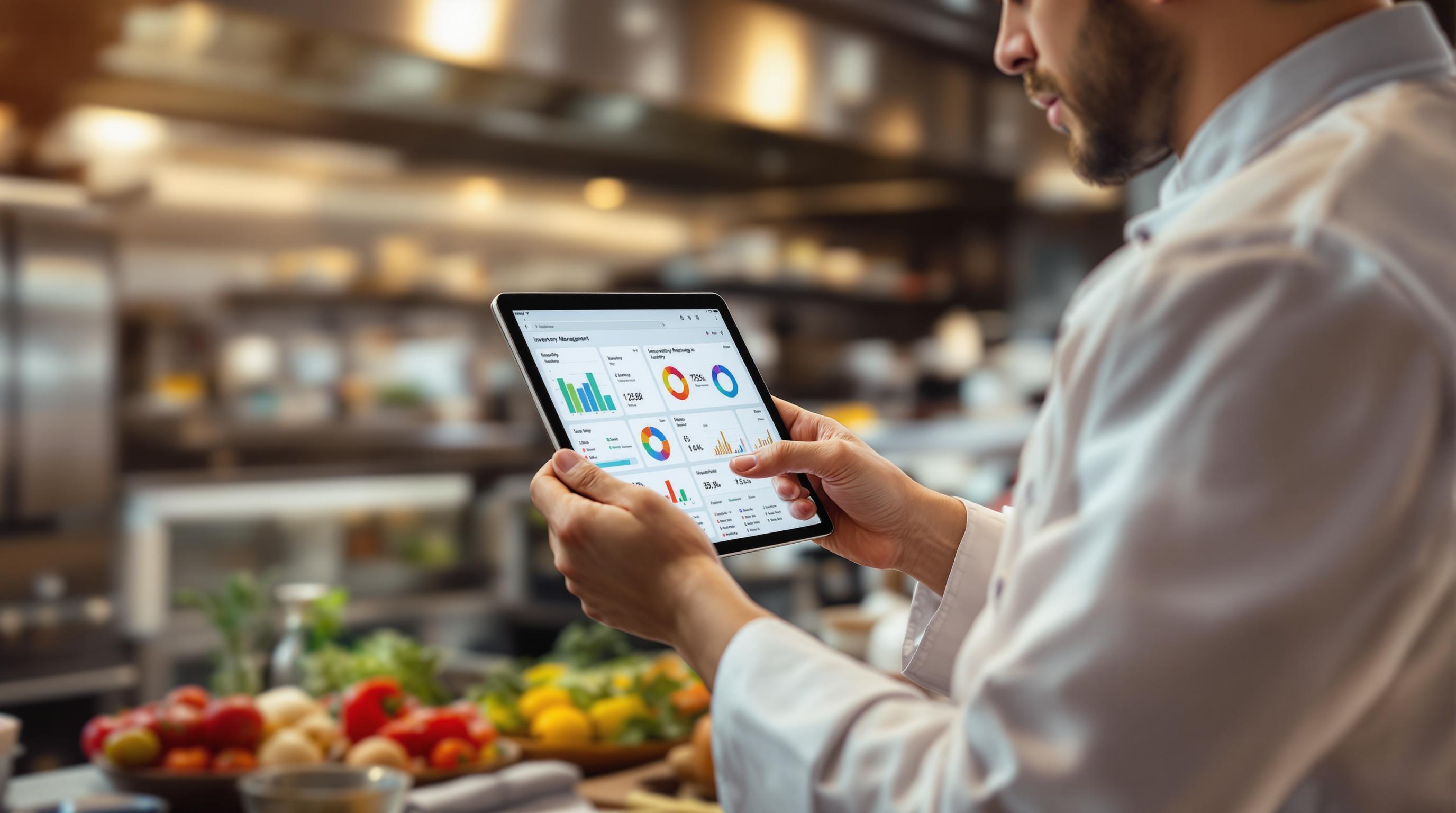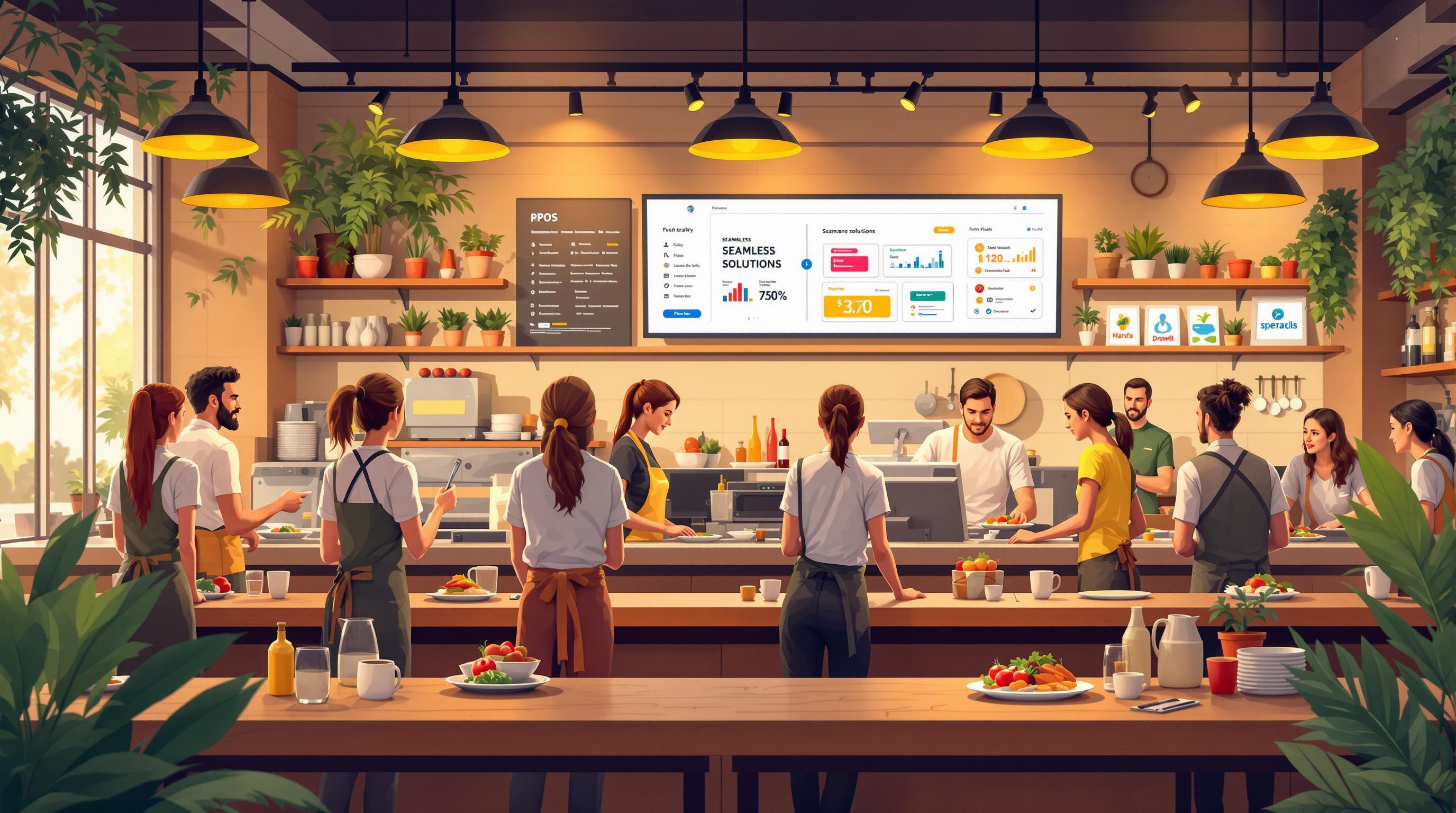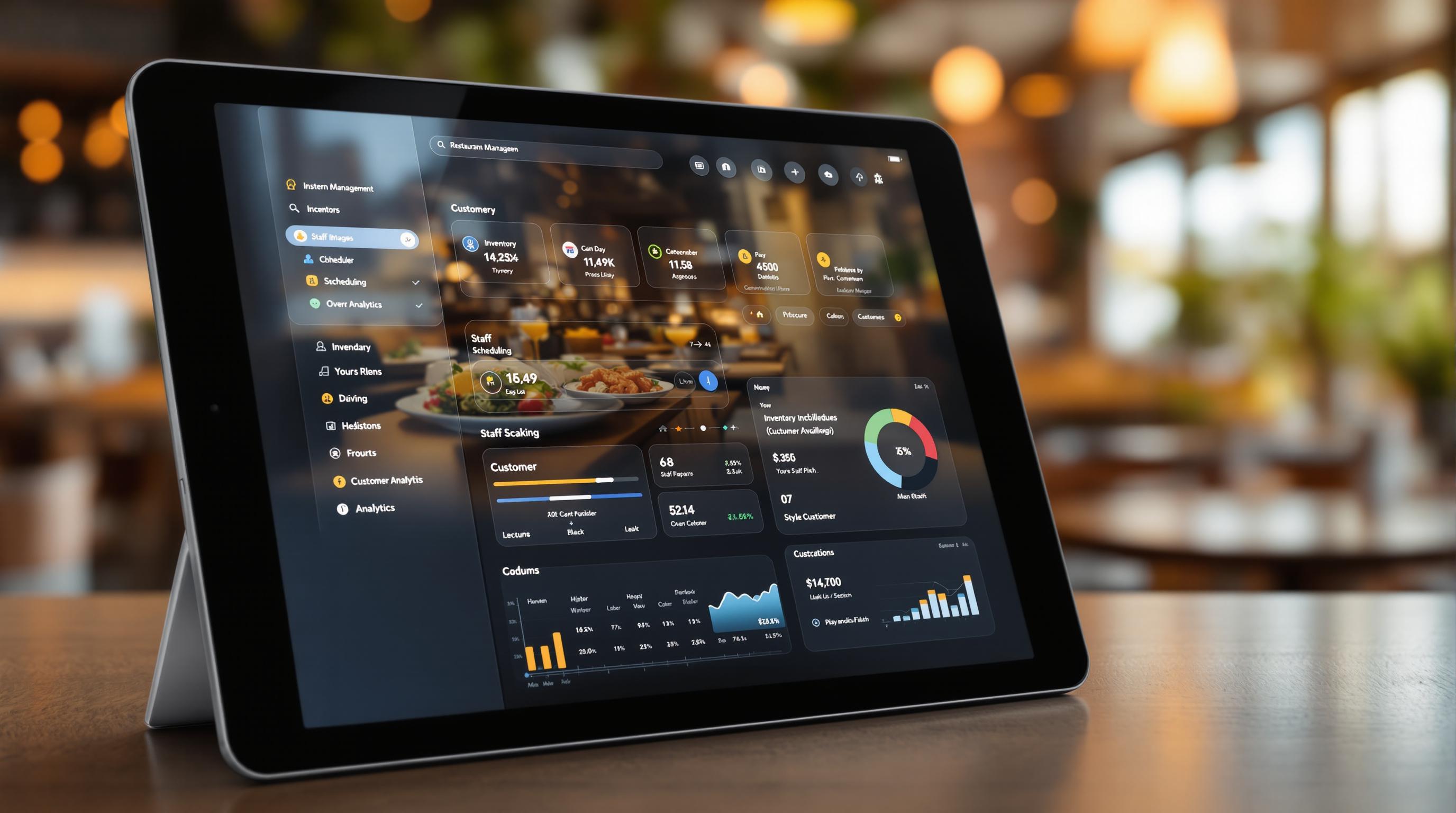Restaurant reservation systems simplify bookings, manage table assignments, and improve customer experiences. They store guest preferences, reduce no-shows with automated reminders, and integrate with tools like POS systems and online ordering platforms. These systems are essential for modern restaurants to streamline operations and meet customer expectations.
Key Benefits:
- Efficiency: Automates bookings and reduces manual tasks.
- Personalization: Tracks guest preferences for tailored experiences.
- Integration: Syncs with POS, inventory, and delivery tools for better management.
- Customer Convenience: 36% of diners prioritize online reservations when choosing where to eat.
Popular Options:
| System | Features | Best For | Pricing |
|---|---|---|---|
| OpenTable | Online bookings, marketing tools | Large chains | Per-reservation + monthly fee |
| Resy | Guest experience, waitlist tools | Independent/trendy venues | Varies by size/needs |
| SevenRooms | Guest profiles, feedback tools | High-end establishments | Feature-based pricing |
Choose a system that fits your restaurant's needs, train your staff, and integrate it with existing tools for maximum efficiency.
5 Restaurant Reservation Software Systems in 2025
Key Features of Restaurant Reservation Systems
Modern restaurant reservation systems aim to tackle operational challenges while meeting customer expectations, ensuring a smooth dining experience for everyone.
Online Booking and Real-Time Availability
Diners today want quick and easy access to reservations. These systems keep availability updated across all platforms, helping restaurants avoid double-bookings and ensuring a hassle-free process.
| Feature | Operational Benefits | Customer Benefits |
|---|---|---|
| Real-time Updates Across Platforms | Eliminates overbooking and reduces phone inquiries | Instant confirmations and 24/7 access to bookings |
| Automated Waitlist | Improves table turnover efficiency | Provides accurate wait times |
These features not only simplify table management but also enhance the overall guest experience by utilizing customer data effectively.
Managing Customer Information
Reservation systems store valuable guest details like visit history, dietary preferences, and special occasions. This data allows restaurants to offer tailored services, creating a more memorable dining experience. Personalized touches like remembering a favorite dish or celebrating a milestone can encourage guests to return.
Integration with Other Restaurant Tools
Modern reservation systems connect seamlessly with other essential tools, creating a unified digital ecosystem:
- POS Systems: Links with point-of-sale systems to build detailed guest profiles, enabling personalized service.
- Online Ordering Platforms: Combines dine-in, delivery, and takeout profiles to provide a cohesive customer experience.
- Inventory Management: Aligns stock levels with reservation trends, helping restaurants plan more effectively.
sbb-itb-53f0a12
Choosing the Right Reservation System
Picking the right reservation system is all about understanding your restaurant's needs and how the system can streamline your operations. Today's options come with a variety of features and pricing models that can directly impact how efficiently your business runs - and your bottom line.
Identifying Your Restaurant's Needs
The features we went over earlier - like waitlist management and personalization - can help you decide which system is the best fit. Here’s how different needs might shape your choice:
- Service Style: Fine dining spots may need tools for detailed guest profiles and tracking special occasions.
- Table Turnover: Quick table management features are ideal for fast-casual restaurants.
- Peak Hours: If you’re dealing with high-volume traffic, advanced waitlist tools can help manage the rush.
- Customer Base: If your guests are tech-savvy, mobile booking options might be a must.
Once you’ve nailed down your requirements, it’s time to explore the top reservation systems.
Comparing Popular Reservation Systems
Here’s a quick look at some of the most well-known options:
| System | Key Features | Best Suited For | Pricing Structure |
|---|---|---|---|
| OpenTable | Online bookings, guest feedback, marketing tools | Large chains | Per-reservation fee + monthly subscription |
| Resy | Focus on guest experience, waitlist tools | Independent/trendy venues | Varies based on restaurant size/needs |
| SevenRooms | Booking widgets, personalized guest tags | High-end establishments | Varies by feature requirements |
After choosing the system that aligns with your needs, the next step is setting it up effectively.
Steps to Set Up a Reservation System
1. System Setup and Integration
- Lay out your floor plan, set seating capacities, and define booking time slots.
- Sync the system with your existing POS and management tools.
- Configure guest profiles and booking settings to match your preferences.
2. Staff Training
Make sure your team is comfortable with the system by covering:
- Day-to-day operations.
- Handling changes, cancellations, and no-shows.
- Managing walk-ins alongside reservations.
"Choosing the right reservation system for your food business is one of the most important decisions you can make to ensure that your restaurants are operating at peak efficiency, and profitability." - SynergySuite Blog [3]
Connecting Reservation Systems with Other Tools
Running a modern restaurant means juggling multiple systems. When reservation platforms connect smoothly with other tools, restaurants can operate more efficiently and improve the guest experience.
Integrating with POS Systems
Connecting your reservation system with a Point of Sale (POS) system can make a big difference in how smoothly your restaurant runs. For example, SevenRooms' integration with POS systems allows restaurants to track orders, process payments, and maintain detailed guest profiles - all in one place [1].
Here’s what POS integration brings to the table:
- Real-time table updates: Know instantly which tables are occupied or ready for the next guests.
- Accurate billing: Minimize manual errors during payment processing.
- Richer guest profiles: Combine reservation details with spending habits and order history.
- Better insights: Use dining patterns to allocate resources more effectively.
Hostme’s reservation system is a great example. It updates table availability in real time, helping improve seating efficiency [2].
Linking to Online Ordering and Delivery Platforms
Integrating reservation systems with online ordering and delivery platforms creates a smoother experience for both in-house and off-premise dining. This is especially important for restaurants managing multiple service types.
| Integration Type | Key Benefits | Operational Impact |
|---|---|---|
| POS Integration | Automated order tracking, fewer errors | Faster table turnover, accurate billing |
| Online Ordering | Simplified order management | Improved kitchen performance |
| Delivery Services | Automated dispatch, status tracking | More reliable delivery timing |
To get the most out of these integrations, focus on two things:
- Data flow: Ensure customer and order data moves seamlessly between systems.
- Staff training: Make sure your team knows how to use the integrated features effectively.
"The ability to integrate reservation systems with other restaurant technologies is no longer a luxury - it's a necessity for maintaining competitive advantage and operational efficiency in today's digital-first restaurant environment." - Quandoo [1]
These connections are key to running a restaurant efficiently, helping deliver great service across all dining options.
Conclusion
Key Takeaways
Reservation systems play a crucial role in simplifying operations and enhancing the guest experience. In fact, 36% of customers regard online reservations as the most important tech feature when deciding where to dine [4].
A well-chosen system can boost efficiency, improve customer satisfaction, and increase revenue by automating tasks and minimizing inefficiencies. This shift has made reservation systems an essential part of running a modern restaurant.
Practical Tips for Restaurant Owners
Given these advantages, selecting the right reservation system is essential for long-term success. Look for platforms that offer:
- Seamless integration with your current tools
- A user-friendly interface for both staff and customers
- Detailed analytics to guide decision-making
Ensure your team is trained and establish clear policies to maximize the system’s benefits. Keep an eye on metrics such as reservation rates and no-shows to fine-tune its performance. By choosing wisely and staying consistent, you’ll not only streamline operations but also strengthen customer relationships, paving the way for growth.
When evaluating your options, consider these factors:
- Integration with your existing restaurant tech
- Training and support for staff
- Room to scale as your business grows
- Analytics to track and improve performance
Success hinges on proper implementation and regular monitoring. By focusing on these priorities, restaurant owners can make the most of their investment and achieve lasting improvements in operations and guest satisfaction.


